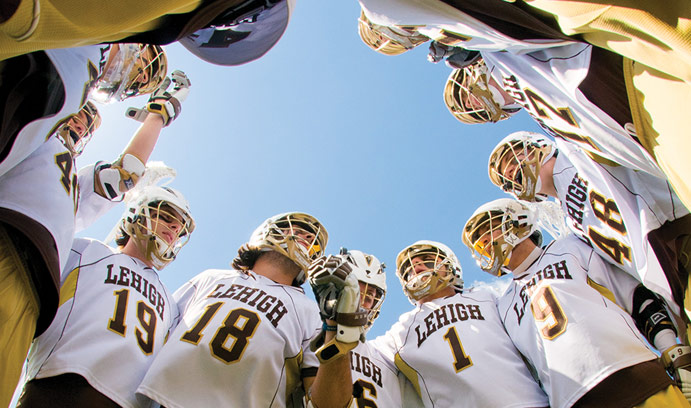What We Stand For

Joe Sterrett addresses the enduring value of Lehigh's vision for college athletics.
Like the rest of you, I am counting down the days to what promises to be one of the most exciting events in Lehigh athletics history—the 150th playing of the Lehigh-Lafayette rivalry game, next month, in New York’s iconic Yankee Stadium. Our celebration of The Rivalry will offer Lehigh the opportunity to show the rest of the nation what we stand for when it comes to college athletics. Our message, I believe, is one that may resonate more strongly today than ever before.
As many of you know, these are challenging times in the world of college sports. At the base of a highly public discourse is the question of whether college sports are a commercial or educational endeavor. An indication of the emerging sentiments may be discerned by looking at the circumstances that have prompted litigation in order to answer that question. A lawsuit involving Northwestern football athletes seeking the opportunity to unionize has begun to address the issue of whether football athletes should be characterized as “employees” or “students.” Another lawsuit is focused on the rights of athletes to share in revenues from merchandise sales that use athlete “likenesses.” And a number of lawsuits have been filed regarding the financial obligations associated with changes in conference membership.
Dramatic changes have been sought and won by selected NCAA member institutions to the governance authority and to the process for determining NCAA rules. The desired outcomes are explicit—to provide “more” benefits for athletes, perhaps as a means of mitigating their growing expectations relative to sharing in the revenues generated by the sports enterprise. As this happens, the gap is widening between athletes who believe they are working for colleges by playing sports and athletes who truly are students at the colleges for which they play.
The consequences of these trends in sentiments, motivations and litigations threaten the structure and viability of the NCAA as the governing structure for college sports. Already, many regionally based and historically traditional associations and competitive rivalries have been forsaken in the effort by multiple conferences to include new members with specific media markets in their conference footprint.
The quest for revenue has also impacted the search for and acquisition of talent. The salaries for head coaches in high-profile sports have escalated beyond any educationally based comparator. The challenge of recruiting talented athletes has led to earlier and earlier scholarship offers from programs, and subsequently, a not-so-unpredictable increase in transfer rates. Among the most referenced attractions expressed by highly recruited athletes are the opportunity to play right away, the opportunity to develop the sport skills needed for “the next level,” and the opportunity to utilize extraordinary athletic and training facilities. “Success” for these athletes is too often defined by national visibility and recognition, athletic skill development and professional draft rankings.
These are also challenging times in higher education. Public scrutiny of the cost and price of college is no longer balanced by an acknowledgment of the statistically valid financial benefit of a college degree as measured by earnings differentials between those who have completed a degree and those who have not. Furthermore, government involvement in higher education is less about investing in funding subsidies or research efforts, and more about the growing obligations for detailed reporting of educational outcomes, expenditures and student behaviors.
We need to be cognizant of what these trends may be telling us about college sports. And we need to be thoughtful about how we choose to guide our programs and the perceptions generated by our priorities.
My view is that clarity around our mission at Lehigh, and the outcomes we aim to achieve for our student-athletes, has never been more important. Our mission of advancing learning and fostering personal development and leadership differentiates our athletics program and experience from those in which revenues, entertainment and visibility are the drivers of behavior, if not also the primary goals. We are good at educating through sports, and at developing young people into balanced and grounded contributors and leaders. We are working to be even more effective at that mission. We want to lead others who view in a similar way the mission of their athletics programs.
Outcomes matter, of course. We can’t be all about intentions and process. So we have to ensure our student-athletes graduate, and we have to ensure our teams win. Those outcomes foster interest in what we are doing and how we are getting it done. That interest translates into stronger students, stronger athletes, and aspirations that are ever more purposeful and ambitious.
All of that adds value—to the experience of our student--athletes, of course, but also to the way the university views athletics as part of the learning and developmental experience.
In today’s world, the way we approach our athletics program, and the way we measure success, is our statement of distinctiveness. It is a statement of which we can all be proud.
By Joe Sterrett '76 Murray H. Goodman Dean of Athletics
Photo by Ryan Hulvat
Posted on:

